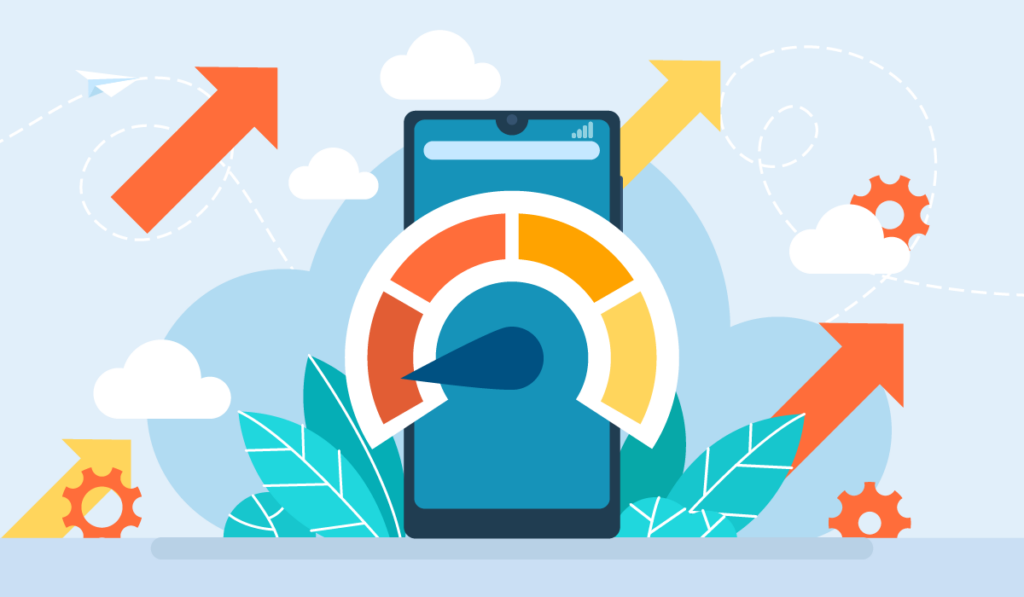Do you know how to accurately measure the level of latency on your customer calls? Research by IDC states that “global business leaders rate latency a higher priority than speed.”
Unfortunately, despite this, latency during calls remains a common problem. Undoubtedly, these issues can negatively impact your call quality, frustrating both your contact center agents and customers.
Learn how to improve your CX by monitoring your contact center’s inbound and outbound lines with Cyara’s contact number tests.

What is Latency?
Latency, often referred to as ‘lag,’ represents the time delay from when one party on a call speaks, to when the other person hears their voice. Due to the nature of phone calls and the distance between the caller and recipient, some natural delay will always occur. Thankfully, these small delays are typically barely noticeable.
However, longer, more evident delays can be introduced through various factors along the call path that are most likely outside of your team’s internal control. These include the number of network hops and the chain of hardware components that ultimately connects the call.
What Are The Effects?
High latency can adversely affect the quality of your voice and video calls:
- Greater communication delays: High levels result in noticeable delays between speakers during voice calls, making conversations feel unnatural. This issue is amplified in video calls, where it can cause distortion issues between audio and video streams, leading to distracting discrepancies between the words spoken and lip movements.
- Reduced real-time interaction: Latency hampers the effectiveness of real-time interactions, posing difficulties for users to engage in fruitful conversations. This issue becomes particularly problematic in situations where quick responses and immediate feedback are crucial, such as during business negotiations or virtual collaboration sessions.
- Increased frustrations: Users are likely to become frustrated with the delays and disruptions it causes. These frustrations not only impact individual experiences but also carry the potential for reputational damage to your organization.
- Diminished productivity: In business environments, high latency in communication and collaboration tools or systems can hinder participation and productivity. It also significantly increases the likelihood of misunderstandings. Unfortunately, this has the potential to reduce the overall efficiency and success of your distributed teams.
- Escalated customer churn: In terms of customer and user applications, high latency has been shown to drive customers away. This is because people prefer seamless and responsive communication experiences. Not only does this cause reduced customer satisfaction scores and lower brand loyalty, but your audio issues could also be driving customers towards your competitors.
- Exacerbated audio issues: High latency often contributes to or exacerbates packet loss and jitter problems. This will further degrade the quality of your voice and video calls. Packet loss can result in missing audio or video segments, while jitter can cause uneven and choppy playback.
How to Measure It?
Latency, measured in milliseconds (ms), can be assessed in two ways:
- One-way: This measures the time it takes for a data packet to travel in one direction only. It is commonly used to diagnose network problems.
- Two-way / round trip: This measures the round trip time and is frequently used to calculate mean opinion scores (MOS).
Guidelines
- For VoIP calls, a one-way latency of 20 ms is standard and falls within the normal range.
- According to research by Gregg Communication Systems, latency less than 150 ms is barely perceptible and is generally acceptable. However, they warn that latency should not exceed 150 ms, emphasizing its potential to dramatically reduce call quality and cause issues.
- The International Telecoms Union (ITU) recommends that one-way latency should not exceed 150 ms for voice calls (or 300 ms for round trip). Anything beyond these thresholds can lead to a significant decline in call quality, resulting in incomprehensible, distorted, and non-productive conversations.
- IDC’s research also highlights that 90% of business leaders specify they need a very low latency of 10 ms or less to ensure the success of their applications.
Cyara’s Testing
Today’s users hold high expectations for call quality, and businesses, such as yours, rely on clear communication channels, especially for customer interactions.
This is why many organizations are now taking a more proactive approach to their audio quality management, including latency. Reducing this is frequently a priority during the design and optimization of communication systems. Recent technological advancements, including improved internet infrastructure and faster processing speeds, aim to address these challenges. Techniques like Quality of Service (QoS) management, adaptive streaming, and more efficient codec algorithms also play a crucial role in actively minimizing its impact.
Cyara’s latency test empowers you to replicate the customer call flow, and quantify the latency that your customers’ experience. As a result, you have the power to proactively measure any delay on your calls. What’s more, repeated testing allows you to detect where there are variations over time. Additionally, the data generated enables you to make more informed routing decisions. All these aspects empower your team to take swift action in minimizing latency on your lines, ultimately enhancing the experience for both customers and staff.
For further details on Cyara’s latency test, see our contact center number testing page or reach out to our team directly.